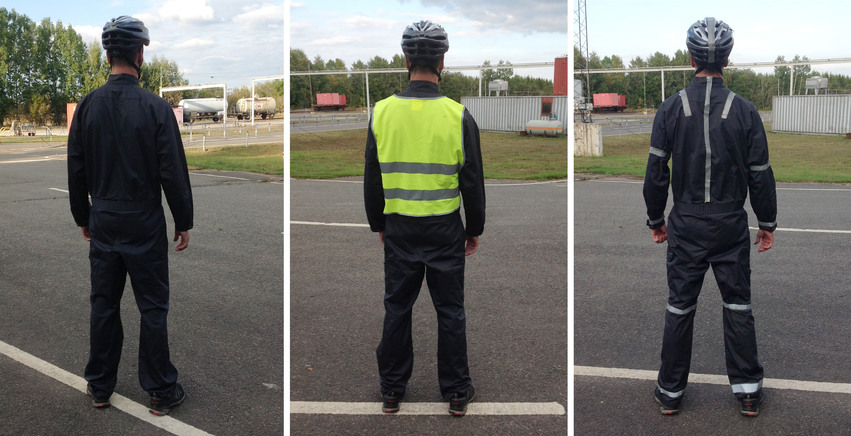Cyclists with reflective bands on their arms and legs were spotted by drivers from as far as 60 meters away. Those wearing only a reflective vest were visible at just over half that distance, about 30 meters. This is shown by a study from the University of Skövde.
As autumn darkness falls, spotting cyclists and pedestrians becomes harder for motorists. Reflectors do help, but placement on the body is crucial.
The study shows that reflectors on moving parts, like arms and legs, make the biggest difference. Drivers were able to recognise and react to cyclists at twice the distance compared with when the cyclists wore only a reflective vest.
Why does it matter where you place the reflector?

"Humans are good at perceiving motion. From a distance, we can recognise someone just by their walking style. Reflective points on the body provide others with clear information that we are in motion and increase our visibility."
Paul Hemeren, Associate Professor of Informatics at the University of Skövde
How the reflector study was conducted
The researchers had cyclists wear three different sets of reflectors:
- no reflectors at all
- reflective vest
- reflective bands on arms, legs, back and helmet

The cycling was filmed on a dark night in central Skövde. Afterwards, motorists in a driving simulator drove a 4.6-kilometre route and honked the horn when they spotted the cyclists. The results were clear: the placement of the reflectors determined how early the drivers noticed the cyclist.
Reflective vests can blend into the background
Many believe a reflective vest makes them highly visible, but that is not always the case. In environments with street lighting and other light sources, the vest can blend into the surroundings.
– A person wearing a reflective vest can be difficult to distinguish when there are other light sources around. Bands on arms and legs are more easily perceived. We are also seeing that more people have started using reflective bands, which is encouraging, says Paul Hemeren.
Conclusion
Reflectors save lives, but they need to be placed correctly. If you want to be as visible as possible in the dark, place reflectors on your arms and legs.
Read more about the study
The results were presented in the scientific publication Biological Motion Indicators for the Detection of Cyclists at Night.
Answers to common questions about reflectors
-
The reflector reflects light in the direction from which it came. The measure of reflectivity (known as CIL) determines how well the reflector works. According to The National Federation for Road Safety - NTF.se, the recommended size of a reflector is at least 15 square centimetres, with a CIL value of 400.
-
Most reflectors lose their effectiveness after 1–3 years, especially if they are scratched or dirty. Reflective vests that are frequently washed wear out more quickly. (Source: trygghansa.se)
-
Do a simple test at home:
- Hang the reflector at eye level in a dark room.
- Shine a torch at eye level from at least four metres away.
- Does it reflect brightly and clearly? Then it’s fine. If not – replace it!
-
Reflective vests and moving reflectors (on legs and arms) are the most effective. A reflector that moves is noticed more quickly by drivers, according to research from the University of Skövde.
-
No! A reflective vest provides visibility from the front and back, but reflectors on moving body parts are detected at a greater distance than a reflective vest, according to the study from the University of Skövde.
-
No, not as a pedestrian. But keep in mind that you are difficult to spot in the dark without reflectors!
As a cyclist, however, you are legally required to have reflectors and lights on your bicycle. You can read more about the legal requirements for cyclists on the Swedish Transport Agency’s website.
-
Poor-quality reflectors can give you a false sense of security. You think you're visible, but you're not.
A poor reflector may, for example, be old and worn, or not comply with European marking standards. More information is available at The National Federation for Road Safety - NTF.se).

